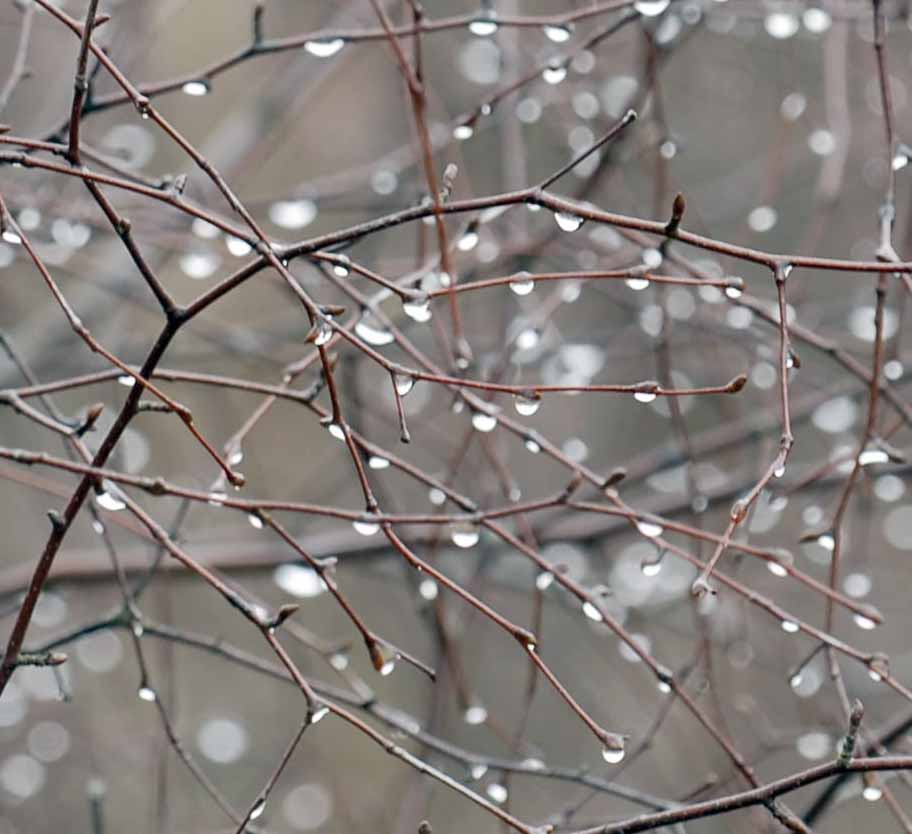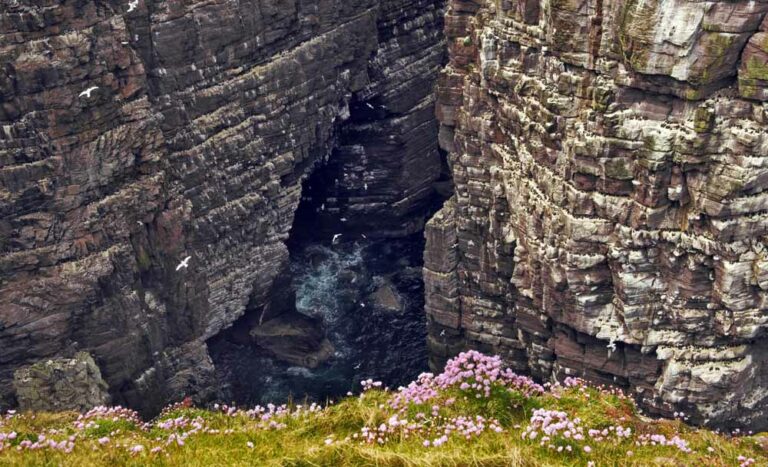It was raining as the old year vanished into the new. A quiet, steady ornamentation on the tin roof of the hut, a clock ticking slowly as time slipped away into the darkness of the hours before dawn. For a while, the rain intensified, drumming more loudly as the orchestra of sound spread out and expanded over the sleeping body of the earth. I opened the window and fresh air washed my face. I heard the trees dripping wet in the wood behind me. A new year had begun, a new morning was yet to begin, and the rain continued steadily falling in the black of the night.
The new year is traditionally a time when we reflect on the possibility of change and make new aspirations. Sometimes we look back on the year that has passed and think about what we would like to be different, and how we might go about it. A new direction, an intention for greater well-being, perhaps letting go of an unhelpful habit, or starting some kind of new routine. We consider what we might want less of, and what might increase the quality of our lives. We recognise that there are things we can do to direct our attention and activity in new ways, shift the balance and introduce some kind of refreshed effort.
The kickstart of the new year galvanises attention, and it embraces the underlying truth of change. Perhaps it’s because the calendar date flips over to a brand new number, that awareness of transition is heightened. The changed date faces us out towards new and unchartered territory, a diary with blank squares and open spaces, opportunities to embark on new ventures and dream of different possibilities. Annual reviews are splattered across the news. Social media proliferates with “best of” pictures, picking through timelines of experience to highlight the most enjoyable events of the previous year. We start to think about how we can best go forward. The beginning of a year inspires us to innovate and embrace the new.
The tradition of making new resolutions can also bring an inbuilt pressure to hold to a course of long-term certainty, seeing something through with resolve. How we approach this can be extremely sensitive in these times when uncertainty prevails. So how do we frame hopeful aspiration for ourselves in a way that is workable in a time of unknowns? How do we frame intention in a way that is realistic and manageable?
In my own life, I find times of personal transition to be more helpful instigators for creative review, for example, before returning home from holiday, or when approaching some kind of anticipated change. I will often draw a mind map, a simple cloud shape on a piece of paper, a space for my mind to roam freely around possibilities of small adjustments to life balance. The map might include areas for personal practice, work, creative activity, recreation and exercise, or plans for the garden, or areas I might like to freshly explore. The process of doing this supports a time to pause and consider what might support beneficial and interesting areas of change. The maps are based on creativity and self-care, not goals.
These explorations are usually spontaneous, but the pattern of doing them seems to coincide naturally with times of seasonal change. I keep the pieces of paper in a separate folder, and pull them out from time to time, to see what catches me eye. Not to judge progress, but to see if anything leaps off the page by way of interest, something I might benefit from remembering, or from giving further attention. Rather than a boom or bust approach, these sketches allow for small steps in shifting direction and balance. They help me to see with new eyes how I can direct attention helpfully in the coming few weeks, rather than a whole year ahead. They create space for small tweaks and adjustments, and enable me to tune in more closely to what really interests me, or seems helpful to develop in my life at a given time.
Doing these mind maps on a regular basis means that annual new year resolutions tend to be more evenly diluted in the flow of seasonal change, and acknowledges what is changing in me throughout the year. What I might reflect on in winter might be very different in summer, in terms of energy and activity. It might be just one thing on the map that trickles out and induces a positive change. But it represents a conscious change, however small – a place to plant a seed of intention and nurture it.
And so, at start of a new year, what comes across strongly to me is the reminder that change is always possible and is the basis of all our experience. In any moment, we can pause and allow for review. What’s really needed here? How can I best take care of this moment? Any moment can be a new beginning, shaping our response to experience. Life is an accumulation of repeated moments of presence. What matters is how we live our intentions with awareness in the present moment. The lit fuse of direct experience offers dazzling possibilities, sizzling forwards, in simple yet meaningful ways – if we give them permission to exist. We are at the heart of that moving spark.
Of course, it does not always feel that that the present moment shimmers with potential. But the fuse is a moving dynamic, regardless, threaded through all of our experience. We are part of a continuous cycle of change, which nature reminds us of daily. When the rain fell on the night of New Year, its pattering on the roof reminded me of continuity and the quiet accumulation of restoration taking place in the wintery world outside. No great fanfares, or fireworks, just the rain passing overhead, soaking into the wood, drop by drop. Listening to it for a while in the early hours of the morning was quietly calming, and refreshing, and brought moments of simplicity to the opening of the year.
I find it practical to remember that any moment can be an opportunity for renewed motivation – not just at the turn of a new year, but as part of everyday reality. Reminding oneself what is helpful in any moment can offer just the space that is needed for something to be different. Moments of awareness can lead to moments of greater clarity, and kindness. It might be just a small shift in perspective that makes a difference to the way something is perceived. The energy of intention moves with us, wherever we go, and experience is shaped by how we choose to direct our attention. As one of my earliest meditation teachers once delightfully said, “we are directors of our own movies”.
There is no doubt that new year resolutions are buoyed up by a sense of shared endeavour – that others are doing the same and that together we are holding open doors for the new. The process of review can be positive and refreshing, if guided by wisdom and compassion. In so doing, we also need to honour the complications of life, all the habits, routines and commitments that make up a lifestyle, especially areas where we may struggle or lose morale. These are the places where kind attention is most needed and the very places that offer the greatest potential for meaningful change. We can choose a small pebble of focus, rather than a boulder. Valuing the new year involves valuing all parts of ourselves, not throwing parts of ourselves away in the mix. We need to find steady ground in our intentions, so we can make it possible to refresh and renew.
In a world of increasing need, let’s also make sure that the cloud shape of possibility includes and makes room for appreciation of all we already have that is good enough. Perhaps we can scale down the momentum of wanting and be conscious about all that is already okay. It seems more important than ever to turn towards all the things that resource us and bring satisfaction of the most ordinary kind – the many small details that underpin our world. Rather than always needing something new, we can value more of what we do have. We need to remain actively hopeful that we can take the smallest of steps to contribute to beneficial change in ourselves, and in the world around us. Even finding quiet moments for awareness can help us to appreciate the simple things that bring a steady and clear joy in the immediacy of our lives, in the new of the now.
As I write this, I’m catching the dimming of winter sky through the window, just about etching the shape of familiar birch trees on the skyline. I can hear the frantic honking of pheasants that are roosting in the wood at dusk, a sudden bursting agitation as they find their places to settle in the dark. Another piece of the evening jigsaw, along with the warm light of a lamp pooling my page. A tawny owl calls, a thin sliver of sound rising through the trees further away, somewhere along the edge of wood. I pause, wondering if the sound will come again, and if it will come nearer, as it sometimes does at this time of day. This evening it doesn’t. But I had heard it, clearly and fully, wavering out into the dark like a cool thread trailing into the stillness, and in those few moments, the ringing silence that followed.




